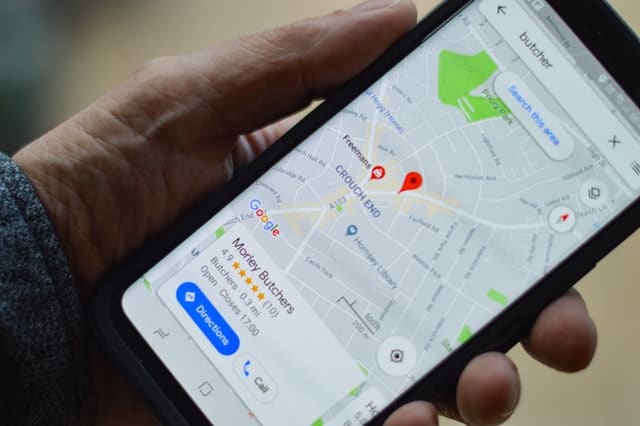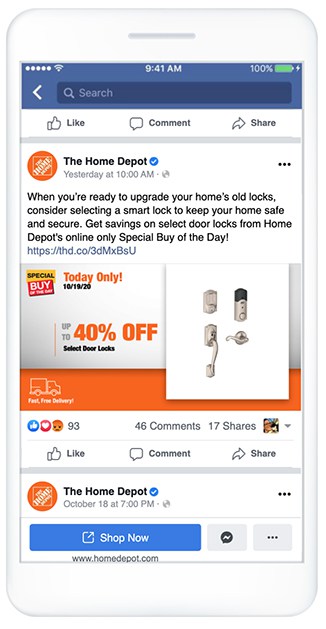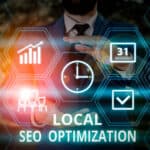
You’ve probably heard of Search Engine Optimization or SEO. But you may still be confused about what SEO is and why it’s so important for your company.
It is becoming increasingly important to include content digital marketing and a method for ranking well in search engines in a successful digital marketing strategy.
Consumers are increasingly turning to the internet for information and opting for helpful, informative content rather than more straightforward advertising.
As a result, effective SEO is critical for your organization to remain competitive, visible, and relevant.
Here’s how you can implement SEO in your company to help you increase your profits. Continue reading to discover why SEO is so important for businesses, as well as how you may put it into practice.
Search Engine Optimization (SEO) is a digital marketing practice that helps make your website visible on search engine results pages (SERP). It’s made up of three parts: technical, on-page, and off-page. SEO is important for online business.
It entails modifying and optimizing the functionality, content, and promotion of your website in order to rank highly on search engine results page (SERPs).
Finally, SEO techniques are designed to work with search engine algorithms. The algorithms look for things like a good functioning website, high-quality content including keywords, and a lot of traffic and time spent on the site.
The qualities that the algorithms seek are all quite advantageous to your company and will assist in converting more sales. Each element is linked to another. The higher a SERP ranking, for example, the more traffic you receive as a result of increased traffic!
For more SEO topics you may want to check this article: Latest SEO success factors reinforces the importance of content.
Table of Contents
Why SEO Is Important For Your Business
So, why is SEO so essential for your company’s success? Search engines are the starting point for the majority of online activity, including product and service research.
Queries (what is input into search engines) are highly targeted; the consumer is looking for information regarding that topic.
As a result, if you have a product or service connected to the query, it’s critical to provide relevant content.
The first links on a page (excluding advertisements) are most frequently chosen by searchers. In general, people will only click links one to five and very few will continue to the second page of SERPs.
Having a Search Engine Optimization plan that puts you at the top of the SERPs is critical. This position will get your attention and provide you with the benefits of SEO.
Some of the things that SEO can help improve include:
Visibility
SEO helps your business get more exposure so that people can find you. As previously said, the vast majority of online activity begins with a search query.
As a result, you want to be as prominent as possible (ideally at the top of the first page) so that visitors will arrive at your website.
Traffic
The goal of SEO is to be seen and in a good position on the SERP so that more visitors come to your website. Organic search, in fact, accounts for the majority of site traffic. Maintaining a solid SEO strategy with many high-ranking links can drive additional visitors than any other marketing strategy.
In the long run, however, this kind of ad network may not be the best option. You can expect to receive fewer traffic because searchers are looking for exactly what you have. Even if you have the most optimized ad set imaginable, you won’t be able to ensure that people see it. If someone is looking for information or a solution to a problem, they have an actual need for it and a current desire to know more.
That is where Search Engine Optimization (SEO) comes in. You may provide the information they require as well as a solution, increasing the possibility of a conversion considerably.
Conversions
SEO may help you increase your conversion rates. More visitors leads to more leads, which should result in more conversions.
For example, if you increase traffic from 10,000 to 50,000 monthly visitors by 2 percent and convert 2% of those visitors, that equals 800 additional sales!
Even if you create the most optimized ad set, you can’t be sure that those who see it will want your product.
This information, when used correctly, may persuade consumers that they require your product or service. Customers will see more value in your products if you explain exactly what you provide and how it will benefit them.
Credibility and Trustworthiness
SEO and content strategies that work are more likely to be trusted. Creating informative and high-quality content establishes trust. A company that has blog entries describing in detail how its products can assist you is more likely to be trusted.
In comparison, a website with only landing and product pages with basic information on their products or services is less trustworthy than one that includes additional features such as backlinks (when others link to your website) and a solid website.
User Experience
The supreme search engine algorithms reward “good UX” or user experience. To be successful, you’ll need to make sure your website is as easy to use as possible.
Technical SEO is where you can learn how to enhance UX. The following sections will teach you some methods for improving UX.
In the end, search engine optimization will push you to make your website easier to use, which will decrease bounce rate and improve time on page. These gains will be compounded!

SEO is the most effective way to attract visitors. Having a strong SEO strategy with many high-ranking links may result in more visits than any other marketing campaign.
How To Implement SEO
Let’s talk about how you can use SEO techniques on and off your website now that you know why it’s vital.
SEO has three main elements: technical SEO, on-page SEO, and off-page SEO.
Technical SEO
Optimizing your website for search engine crawling and indexation is known as SEO (search engine optimization). This is a more complicated part of SEO, but it doesn’t require as much upkeep or regular attention as other elements.
A few technical SEO components to look at include:
Identifying Crawl Errors
Google and other search engines index pages (gives them a listing and position on SERP) by crawling them. “Spiders” will quickly scan or “crawl” web pages to understand what they’re about.
A crawl error occurs when spiders are unable to comprehend or view the page. As a result, they are unable to index or rank your site. Google Search Console’s “coverage” report will show any crawl problems. To determine which pages are “correct,” choose “All known pages,” or use SEM software to do so. Make sure to correct any errors on web pages so they may be indexed properly.
Ensuring Your Website Is Mobile-Friendly
Sites that aren’t optimized for mobile won’t rank well. The Google Mobile-Friendly Test may help you determine whether your site is mobile-friendly. If your website isn’t already, you’ll want to have it optimized for mobile.
Fixing Broken Links
A website should not have any broken links, also known as dead links or 404s. These are bad for SEO and user experience, and they can result in a high bounce rate.
Broken links can be internal (links from your site) or external (links from other domains that you’ve utilized).
You may use free online tools or paid SEO services to discover damaged links. Make sure all broken links are either repaired, removed, or redirected using a 404 redirect.
Checking Website Speed
Websites that load quickly get a boost in search engine rankings (and visits). If your website’s pages take too long to load, it will have an impact on your SEO score.
Users are also more likely to leave slow pages. As a result, they will not spend time reading the material, so all of your effort into researching keywords and producing content will be for naught.
Your pages should load in under 2 to 3 seconds.
Removing Duplicate Content
Duplicate content is not well-liked by search engines, who see it as a sign that your site isn’t developing. It’s also difficult for internet surfers to understand. Check to see if any of the material you’ve already published is duplicate and needs to be removed. Remember to 301 redirects any material you decide to remove from your website
On-Page SEO
On-page SEO, also known as on-site SEO, involves optimizing the actual content that comprises your website. Spiders need access to the information they require to crawl and index the page’s content.
You also need to be utilizing keywords that are relevant to your products and that you can compete for.
Some on-page SEO elements include:
Keyword Research
The first step in content creation for SEO is keyword research. This involves finding out which keywords relate to your products or services and are actively used in search queries.
These need to be well researched so that you choose keywords that are relevant to your offerings and are not too competitive.
The most effective keywords are those that have a high search rate but low competition. High domain authority websites (think BuzzFeed or The Wall Street Journal for business content) will outweigh high search rates and high competition keywords (think of the biggest players in an industry, such as CNBC for trending news or The New York Times for business news.)

You can use a few of these high volume, high competition keywords but don’t focus your whole strategy on these. It’s unlikely that you’ll rank well for those and you’re missing out on an audience searching for less competitive queries.
When choosing keywords, they can be short-tail or long-tail.
Short-Tail Keywords: one or two keywords ex. Dog sitters.
Long-Tail Keywords: more specific phrases of three to six keywords ex. Affordable dog sitters in Houston.
Content Creation
After you’ve chosen your keywords, you’ll need to produce the material. This will most likely be web page content like product or service sites, as well as blog articles. You may also use SEO strategies to produce videos and other media.
Idealistically, you’ll include a variety of materials. A blog post with a video link, for example. Here is what you need to include in your content:
The Keyword Itself
Your content needs your target keyword to be used multiple times. The amount of times it’s used is called keyword density and density will vary based on word count.
There is no ideal keyword density, but a reasonable range would be 300-400 words per keyword. The keyword should also appear in the first paragraph of your article.
Over and under usage can be identified by SEO plugins like Yoast, which will indicate whether you’ve utilized your keyword too much or not enough.
Title
The keyword should appear in your title, ideally at the beginning or as the entire title. It must also be brief, with a limit of 60 characters.
Word Count And Sentence Structure
Your word count should be at least 500 words. Long-form material, on average, is about 1500 words long.
It’s crucial for SEO to have valuable and informative content, so include everything you can about the issue.
It should also be easy to read. Use short sentences, with the average length being 20 words, and avoid any superlatives.
Headings
H1, H2, and H3 headings are important to readers and search engines since they require a large number of words. Use H1, H2, and H3 headings for long or complex content. For more information on SEO basics, continue scrolling down the page below this section!
Headings separate the text and help tell readers and search engines what is discussed in the content.
Image Tags And Other Media
The use of video and audio on your website will improve your search engine rankings. Multi-media content is appealing to search engines. The more types of media you include with your text, the better. Photographs are an important component of this. Make sure there are pictures on your site, as well as alt tags for each one of them.
The primary goal of alt tags is to inform blind persons what pictures are in the text and to inform users that images don’t load if they don’t load. They also aid SEO by allowing spiders to understand what your material is about as another method to explain it.
Other media, such as video, may also assist you to improve your ranking and the number of time people spends on your website as a whole.
Internal Links
A link within a web page on your domain that leads to another web page on your domain is called a backlink.
Internal links help to:
- Provide additional information for those viewing content
- Increase traffic to other pages
- Develop a website structure and hierarchy
- Pass page authority from one web page to another
- Keep visitors on your site longer
URL
Make sure the term you want to rank for appears in your URL. Most websites will generate a URL automatically, but you can modify it if necessary. If the keyword isn’t included or the URL is lengthy, change it.
Meta Description
A meta description is a snippet of text that appears alongside each link on a SERP.
The description will not have a direct influence on your ranking, but it may aid in increasing CTR. This can assist to boost traffic and thus has an indirect impact on your position.
Make a point of summarizing your webpage content in fewer than 160 characters in the meta description. Make certain your keyword is mentioned as well!
If you don’t include a meta description, your blog post’s first 160 characters, followed by “…” will appear. Since it only takes a minute to produce a meta description, there’s no excuse not to do so.

Duplicate Content and Guest Posts
As previously said, search engines don’t penalize duplicate content and thus have no way of determining which one to prioritize for the target keyword.
Make sure everything you produce is original. Even if you have the copyright, avoid posting other people’s material word for word.
Guest postings are when you hire someone, generally an expert, to create blog entries for your site or give material to other websites. Guest articles are a fantastic method to develop brand exposure and produce material.
As previously said, double-check that there are no duplicate guest postings on other websites. Make sure people who send you material understand that it needs to be fresh and original.
Check to see whether the post is unique before submitting it. Make sure each site you work with has its distinct version of your guest posts.
Local SEO
If you operate in a localized area, you’ll want to adapt your campaign to attract visitors from local search results. A local SEO approach is similar to the one described above, but you must check for keywords that omit your location.

You should also include your location when searching for keywords. A long-tail keyword, like the one in our previous example, “affordable dog sitters in Houston,” is defined by a geographic region. You wouldn’t want to rank for “affordable dog sitters” instead of aiming for local phrases that include the location where you provide the service
Otherwise, you’re wasting time reaching out to people who can’t use your products. You may also be missing out on searchers looking for your exact service in your area.
Off-Page SEO
Off-page SEO refers to all forms of SEO outside of your website. The most important components are link building and social media advertising.
Backlinks
Backlinks are links that are mentioned in other domains’ content. The quantity of backlinks has a significant impact on your SERP ranking.
Backlinks indicate to search engines that other people find your material helpful and trustworthy enough to link to. As a result, search engine ranks rise as a result of this, assuming that others would appreciate the information as well.
Backlinks transmit authority from the source domain (the one that includes the link in their content) to your website, the destination domain. The quantity of authority transferred depends on the source site’s domain authority. Backlinks from sites with high domain authority have greater worth than those generated by lesser-known websites.
Links that are not organic are ineffective. This implies they were chosen rather than given as a consequence of payment or being included in a link directory. Both of the aforementioned can have detrimental impacts on rankings.

The most valuable backlinks come from websites with high domain authority.
To obtain backlinks, produce high-quality, useful content on a regular basis and promote it across all of your digital platforms. Well-structured material will be re-shared without the need for any other incentive.
You may also reach out to websites that you want to share your content with. Simply alert them about the material or inquire whether they’d be interested in collaborating on guest contributions.
Within social media posts, links from other people might help your SEO. However, these link shares have less influence than those sourced from other domains.
Social Media Promotion
You’ll need to include social media postings of your material in order to have a comprehensive SEO approach. Make sure you’re posting every blog article at least once on all of your social media platforms.
You should be sharing multiple times during an extended period, and changing your messages as needed.
Social media sharing has the potential to raise public awareness of your material and should result in greater page views and website traffic. It also increases the likelihood that other people will share your material and earn links.
To improve the likelihood of your material being shared, add social share bars to it. More shares aids SEO and social proof.

Search Engine Business Listings
Setting up and optimizing search engine business listings is an important aspect of local off-page SEO. The most essential of these is Google My Business, but also consider optimizing your Bing Places and Apple Maps listings.
Set up will be guided through each of these search engine listings. It will want your company name, location, industry category, and so on.
Some additional things to do to optimize your listings include:
- Adding additional business categories
- Adding other services you offer
- Uploading photos from your business that are geo-tagged
You ensure that you are reaching your target market with a local SEO strategy. You also cut out needless competition that may occur when you use broad keywords.

Tracking SEO Results
Last but not least, following through with your SEO plan requires tracking your outcomes so that you can learn more about your consumers and improve.
You should check your position on a regular basis to see what works best and what isn’t working. You may analyze Google Analytics or a paid SEO tool like SEMrush.
Analytics is a fantastic tool for gathering information about your customers. You may get a wealth of data by looking at statistics. You can find out who clicks your links, how they use the internet, and when they are most active online using analytics.
Having a deeper grasp of your target audience may assist you in future content development and marketing efforts.
Keep an eye on SEO trends and algorithm upgrades as well. Google and other search engines do, in fact, make adjustments and updates, so be sure you’re aware of them and adjust your strategy as needed.
Should I Hire An SEO Professional Or A Marketing Agency?
You may and, in fact, should implement SEO with the assistance of your staff if you have a good digital marketing and content production experience.
Individuals or teams that have SEO expertise, on the other hand, might take some time to master. When you hire an SEO professional or a marketing firm, you will get the benefit of their experience and obtain better results faster than if you attempted to do it on your own.
Contact us right away if you believe your company may benefit from search engine optimization!
We can assist with both technical, on-site, and off-site SEO to improve your search engine ranking and generate qualified leads.



CONNECT WITH US!!